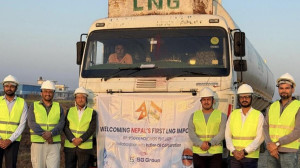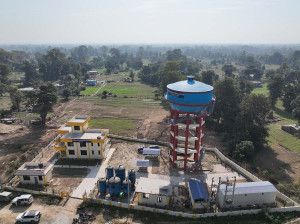Money
Pipes for Amlekhgunj pipeline start arriving
Steel pipes for the planned Amlekhgunj-Raxaul-Motihari oil pipeline have begun to arrive in Birgunj, heightening expectations that the project will get off the ground soon.
Shankar Acharya
Steel pipes for the planned Amlekhgunj-Raxaul-Motihari oil pipeline have begun to arrive in Birgunj, heightening expectations that the project will get off the ground soon.
On Tuesday, half a dozen vehicles loaded with steel pipes were cleared through customs. According to Santosh Yadav, information officer at the Birgunj Customs Office, the pipes had been ordered by Indian Oil Corporation (IOC), the authorized agency for the construction of the pipeline.
Yadav said no import duty was levied on the pipes. “As per the agreement between Nepal and India, construction materials imported for the pipeline project will not be charged customs duties and fees,” said Yadav. “The Finance Ministry coordinated with the Customs Department on this matter.”
Birgunj Customs has been instructed to clear 2,724.23 metres of pipes worth IRs16.6 million in the first lot, according to Yadav. On Tuesday, a shipment worth IRs12.96 was cleared through customs.
Other consignments are expected to arrive in due course. The vehicles carrying pipes had departed from Mumbai for Nepal on January 16. The convoy was held up due to a traffic jam at the Raxaul-Birgunj border point.
The government has identified the Amlekhgunj-Raxaul cross-border oil pipeline as a national priority project. The scheme was first proposed in 1995, but it gained momentum only after the two governments signed an agreement in August 2015 to build it.
The pipeline project stalled due to delays in conducting a detailed engineering survey, acquiring land and calling for tenders. Both sides have now completed all the tasks related to the detailed engineering survey while IOC has purchased pipes and other necessary materials.
However, Nepal is yet to complete land acquisition and an environmental impact assessment (EIA), among other tasks. An estimated 33.6 acres of land will be required for the project on the Nepal side.
Likewise, 25,000 trees need to be cut down and 2,100 electricity poles have to be shifted. Almost 4,000 squatter settlements also need to be cleared. No progress has been made on this front so far.
The pipes to be used in the pipeline have a diameter of 10.75 inches and have been manufactured from a special material. Their life span is estimated to be 30 years. The project is expected to cost Rs4.4 billion. India will contribute Rs3.2 billion while Nepal will pick up the rest of the expenses, according to the bilateral agreement.




 20.12°C Kathmandu
20.12°C Kathmandu















